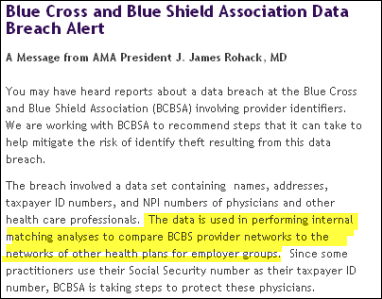Intelligent Healthcare Information Integration 10/31/09
Meaningful Ewes
What’s all this fuss I hear about the government trying to define “meaningful ewes”? What in the world could they be thinking? Now, I’m not exactly a farm boy, but I am small town born and raised and have been on enough of my friends’ farms to know a thing or two about ewes. I think this whole conversation about trying to define the meaningfulness of ewes is just downright silly.
I mean, aren’t all ewes – be they Massese Ehrs or Elliottdale Emrs or Padova Pdf/hs – meaningful? Why would anyone buy one of these creatures to be anything other than meaningful? Goodness knows adopting even one of them creates an entirely new set of tasks and major changes in workflow around any farm. I find it hard to believe that any farmer in their right mind would spend the time and effort it takes to own one of these, no less suffer the upfront expense, if they weren’t planning on putting them to good use. Really, why would anyone buy one of them just to have them around? It’s not like they jazz up the joint just by standing around baaing and bleating.
If I had a farm and I was thinking about getting ewes on it, I can guarantee you that I would make sure they were meaningful. I would spend some time up front to make certain that whichever breed I bought had some real viability for my farm. I’d study up on how to care for my particular variety and maybe even have a professional ewe-ser teach me how best to shear so that I got the greatest yield possible from my efforts and investment.
I just can’t imagine anyone going into ewes without making sure they were doing it meaningfully. What would be the point? Just to have a ewe is a waste of money that no farmer can afford. It is, by definition, the meaningfulness of the ewes that provides the value. Otherwise, the drain on the farm’s resources and operations would make owning one counterproductive, or at the very least, improvident.
While it may take time for any farmer unfamiliar with them to learn all the best ways to keep and care for them, I firmly believe we don’t really need some governmental committee of big city boys (or girls) trying to tell end-ewe-sers how to make our ewes meaningful. Honestly, guys, don’t you think we have enough brains in our little country heads to figure that out?
Instead of offering us money if we follow your definition (if you ever figure that out) of “meaningful ewes,” why not help us up front to fill our pens with stock and have a little trust that we’ll ensure that every ewe is meaningful. What would be so wrong with…
…What?…What’s that you say?…Ooooohhh, meaningful use. Well, well, that’s a lamb of an entirely different color. Never mind.
From the trenches (with a tip o’ the sheepskin hat to Gilda Radner and Emily Litella)…
“It is useless for the sheep to pass resolutions in favor of vegetarianism while the wolf remains of a different opinion.” – W. R. Inge

Dr. Gregg Alexander is a grunt-in-the-trenches pediatrician and geek. His personal manifesto home page…er..blog…yeh, that’s it, his blog – and he – can be reached through http://madisonpediatric.com or doc@madisonpediatric.com.










The article about Pediatric Associates in CA has a nugget with a potentially outsized impact: the implication that VFC vaccines…